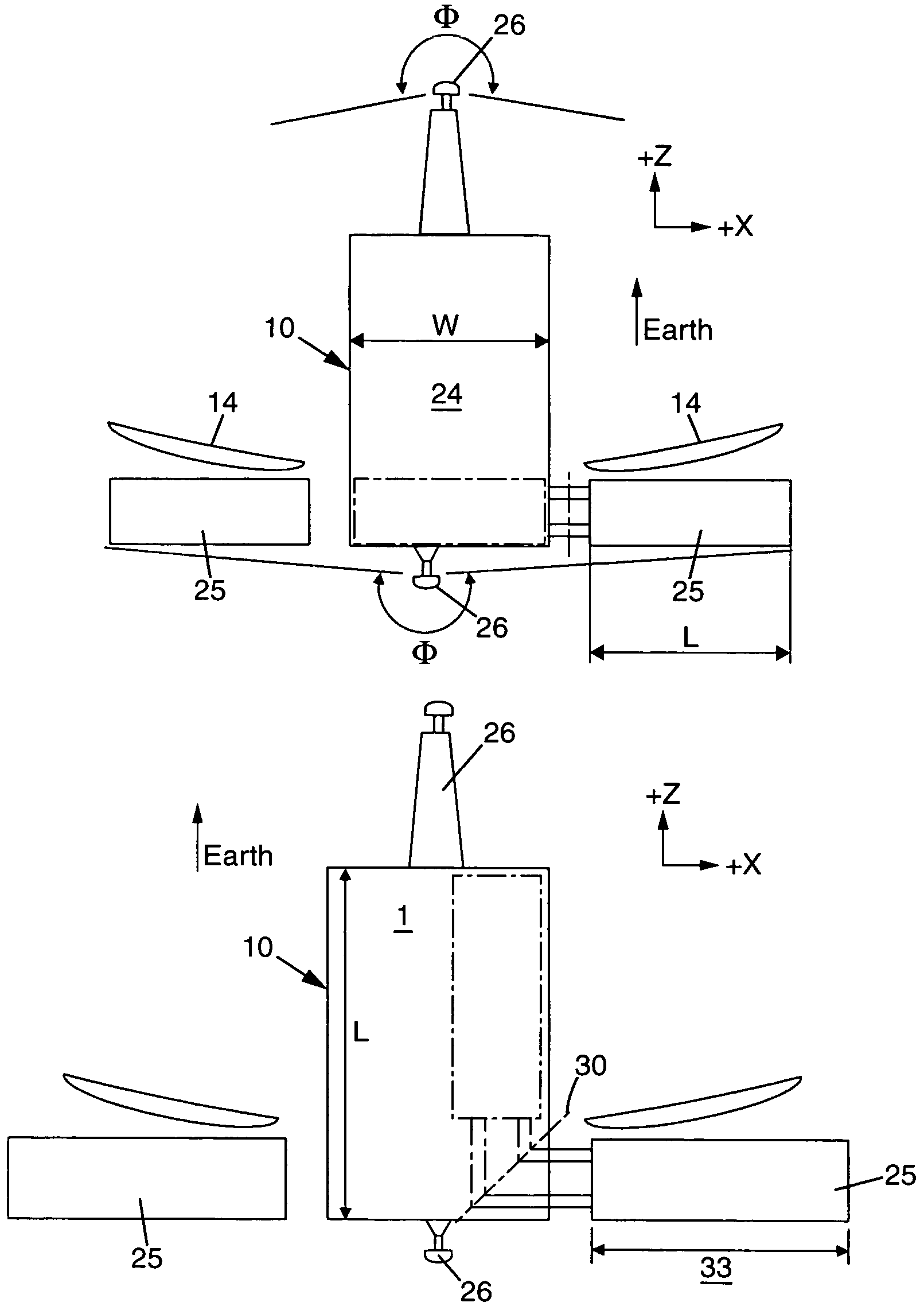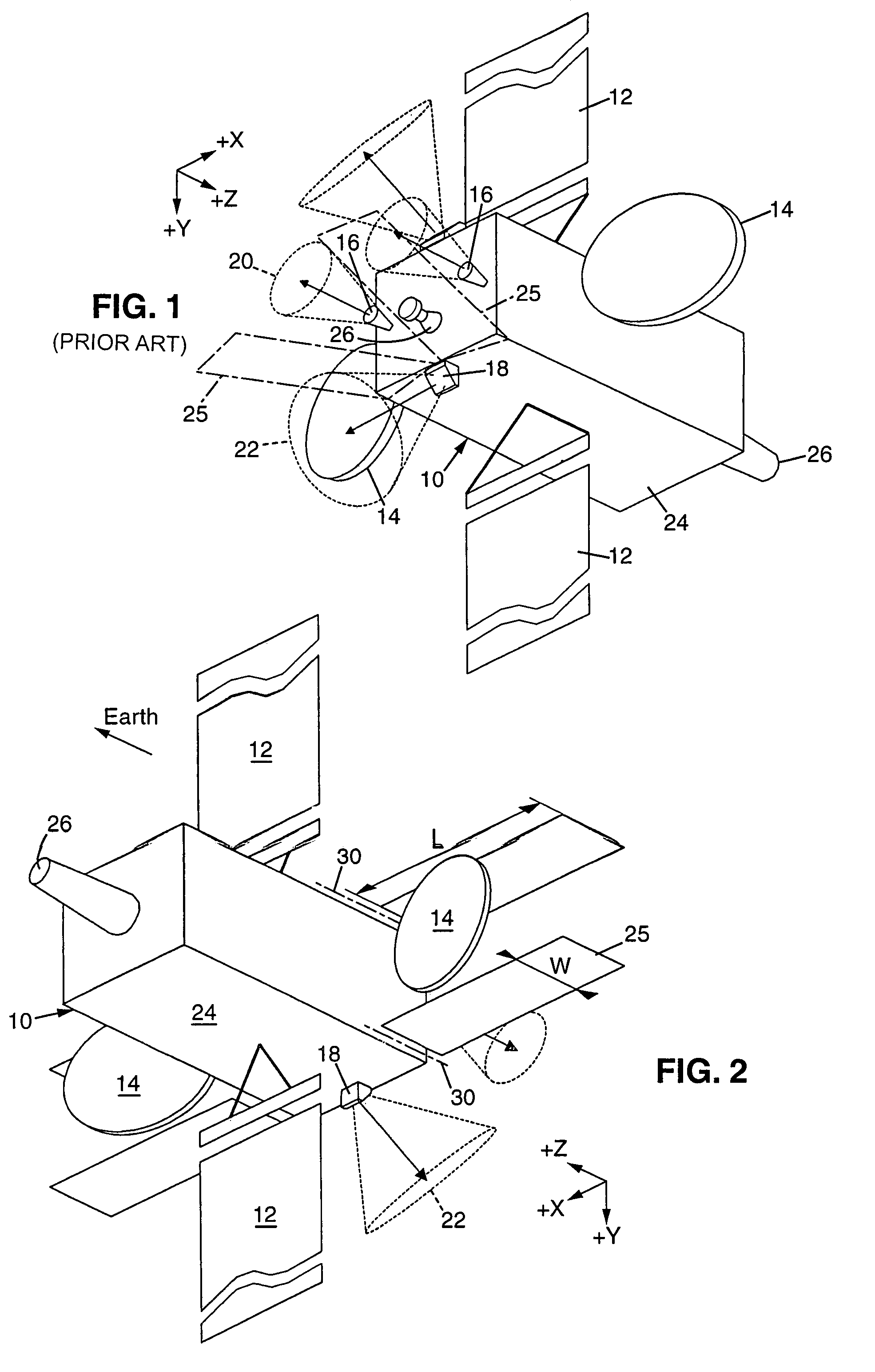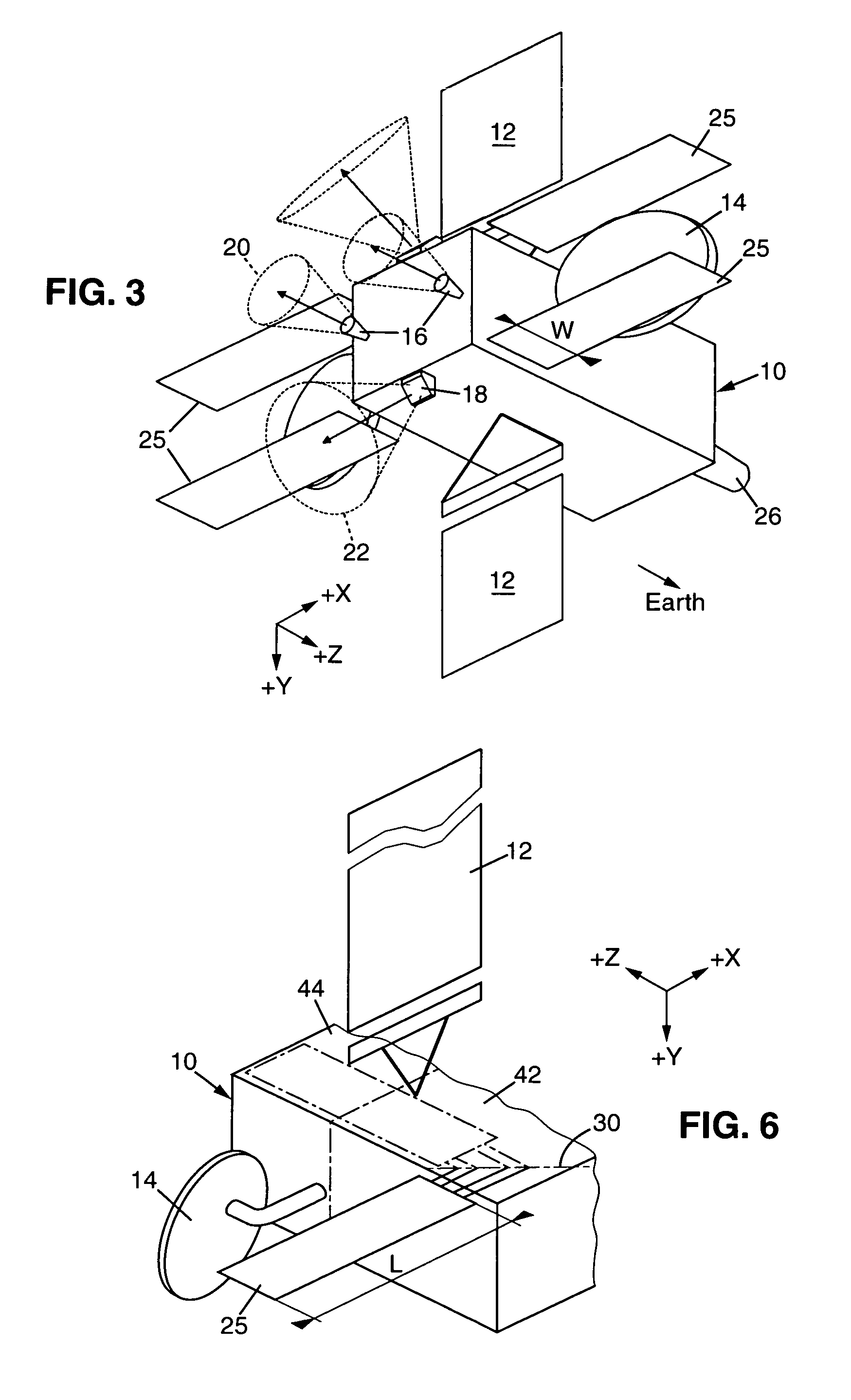Spacecraft with extensible radiators
a technology of radiators and spacecraft, which is applied in the direction of cosmonautic thermal protection, cosmonautic vehicles, transportation and packaging, etc., can solve the problems of reducing the efficiency of nozzles or ion generators, damage to surfaces, and inadequate thermal dissipation surface area of fixed radiating surfaces
- Summary
- Abstract
- Description
- Claims
- Application Information
AI Technical Summary
Benefits of technology
Problems solved by technology
Method used
Image
Examples
Embodiment Construction
[0031]The satellite whose functional architecture is shown in FIG. 2, where the elements corresponding to those in FIG. 1 carry the same reference number, has four radiators 25, in addition to the fixed radiating surfaces 24 of conventional design. Two of these four radiators are designed to tilt symmetrically about a Z-direction axis 30, from a storage position where they are flat against the north face to a deployed position where they are virtually within the extension of this north face, behind the main antenna reflectors 14 so as not to interfere with the lobe of these antennas. The width W of these radiators is thus limited to that of the free space behind the antenna reflectors 14. Their length L is limited to the width of the body in the X direction. The deployment mechanism can be of conventional design and, for example, may consist of one or more springs that, when a retaining catch is released, for example, by pyrotechnic means in response to a command from the ground, br...
PUM
 Login to View More
Login to View More Abstract
Description
Claims
Application Information
 Login to View More
Login to View More - R&D
- Intellectual Property
- Life Sciences
- Materials
- Tech Scout
- Unparalleled Data Quality
- Higher Quality Content
- 60% Fewer Hallucinations
Browse by: Latest US Patents, China's latest patents, Technical Efficacy Thesaurus, Application Domain, Technology Topic, Popular Technical Reports.
© 2025 PatSnap. All rights reserved.Legal|Privacy policy|Modern Slavery Act Transparency Statement|Sitemap|About US| Contact US: help@patsnap.com



